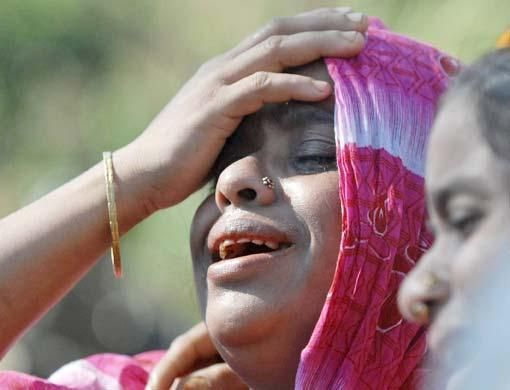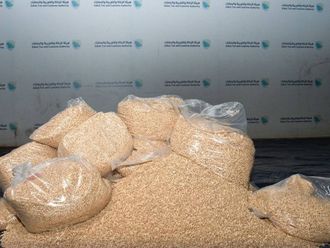Golshakhali: A false tsunami alert two months ago led thousands of Bangladeshis to ignore warnings as Cyclone Sidr approached, costing many lives, villagers and officials said on Tuesday.
"This time we did not take the number 10 danger signal seriously because the government has been issuing these warnings quite often. We have rushed to cyclone centres in the past and then headed straight back," said Abed Master, a teacher in Golshakhali, one of the worst-hit villages in southern Bangladesh.
Officials said they had struggled in vain to persuade villagers - used to the Bay of Bengal's many lesser cyclones and storms - of the danger they faced.
"On Thursday, we used loudspeakers in the mosque to plead with them to rush to the cyclone centres, but hardly anyone responded," said Anwar Hossain Khan, a former chairman of the local government body in the village of Charkhali, where at least 120 people perished.
A massive earthquake off the coast of Sumatra had prompted the Indonesian authorities to issue a tsunami alert on September 13. Malaysia, Thailand, India and Sri Lanka hoisted alerts soon after.
The warning was later withdrawn after Indonesian authorities said there was no apparent danger.
In Bangladesh, however, the country's cyclone alert network swung into action and quickly evacuated over a million people who spent the night in shelters or on high ground.
Forced evacuation
"The police, the government officials and the Red Crescent volunteers forced us to move to safer locations although the river betrayed few signs of danger," said Hafizur Rahman, who lost his son and a daughter in the cyclone.
They told us that a giant wave was heading towards Bangladesh and would devour the coastal villages," said Rahman, of Golshakhali, on the bank of the Bishkhali river, near the Bay of Bengal.
"I did not go to the shelter last Thursday when the cyclone came. By the time the wind began to blow away our houses, it was too late," he said.
Red Crescent officials admitted that September's false alarm could have led many to stay at home despite repeated warnings.
"On September 13, we evacuated some people from the most vulnerable villages. People also heard media stories about a tsunami and spontaneously headed to the shelters on their own," said Shamsul Alam, the head of Red Crescent's cyclone preparedness programme in the coastal district of Barguna.
When Thursday's warning went out far fewer people responded, he said, "although the danger was real and we had more than a day to warn people."
The southern district of Barguna was among the worst-hit by the cyclone, which left nearly 3,500 dead in its wake, with the toll expected to rise further.
Some 900 deaths have been reported in the district, although local officials put the toll at 1,200, with more than 2,000 still reported missing.
Red Crescent volunteer Rustam Ali said the disaster highlighted the importance of constantly improving the forecast and alert system.
Worst-affected reached
"For millions living in the coastal districts, it's a matter of life and death," he said. Meanwhile, relief workers and the military yesterday reached the last remaining pockets of the country devastated by the cyclone.
It has taken some five days to gain access to the hardest-hit areas in an operation involving helicopters, planes and boats, as well as thousands of ground troops and aid workers.
Two US C-130 transport aircraft and two American naval vessels were poised to join the efforts. "We have reinforced relief efforts by adding more helicopters and cargo planes to fly food, medicine, water and other essentials to the survivors," said an army official.
But food supplies were still woefully inadequate.
"Hundreds of hands go up to grab just one food packet. This is the tragic reality along the entire cycone-ravaged coastline," said a relief operator in the Patuakhali district.
The Category-Four cyclone struck late on Thursday with 250 kph winds that whipped up a five-metre tidal surge.
The disaster was the worst in the impoverished country of 140 million since 1991, when a cyclone and storm surge killed around 143,000 people.
"Food, clothes and shelter are needed immediately for the survivors who are resilient and are trying to start life anew," said Louis-Georges Arsenault, of the UN children's fund, Unicef, after visiting some of the worst-hit areas.
Rebuilding efforts
The country's army-backed interim government said supplies would increase in coming weeks once $142 million (Dh521 million) in promised emergency relief from international donors and Saudi King Abdullah Bin Abdul Aziz starts rolling in.
The navy and coastguard started to work on rebuilding homes, defence sources said, and troops were helping civil officials to remove uprooted trees blocking highways.













